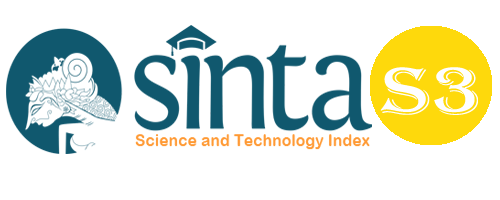Analysis of Productive Waqf Management in the Context of Empowering the People by Muhammadiyah Regional Leaders, Enrekang Regency
Abstract
Waqf has a strategic role in improving the welfare of the people if it is managed optimally. However, the use of waqf for social welfare is still very rarely done. So far, the use of productive waqf in Indonesia has not led to the economic empowerment of the people and tends to only be for the interests of worship activities and things that are commonly carried out in Indonesia such as mosques, prayer rooms, schools, graves and others. The same thing happened in Enrekang Regency. Waqf land in Enrekang Regency is divided into 5 types according to its use. The use of waqf land as a mosque dominates 80% of the total waqf land in Enrekang Regency. Followed by schools at 7%, then tombs at 6%, other social groups at 4%, and finally a prayer room at 3%. Therefore, the Regional Leadership of Muhammadiyah (PDM) Kab. Enrekang through the Waqf and Assets Council as a nazhir organization has a role in managing productive waqf that can be used to empower the people, especially the people of Enrekang Regency. Related to this problem, this research needs to be carried out to analyze the management of productive waqf by the Muhammadiyah Regional Leadership of Enrekang Regency and the empowerment of the people through the management of productive waqf, as well as the obstacles in the management of productive waqf faced by the Muhammadiyah Regional Leadership of Enrekang Regency. The type of research conducted is descriptive qualitative research. which was carried out using the methods of observation, interviews, documentation, and questionnaires with the research subject of the Muhammadiyah Regional Leadership of Enrekang Regency, specifically the Waqf and Wealth Council PDM Kab. Enrekang, wakif, and the people of Enrekang Regency. This research uses data analysis model of Miles and Huberman. The results of the study indicate that the management of waqf assets by the Waqf Council and PDM Treasurer of Enrekang Regency can be broadly said to be effective. This is supported by the results of research showing that of the total waqf land area of 41,201 m2 that is managed, 60% or 24,721 m2 have been empowered for the benefit of the community which is dominated in the form of schools/madrasah/pesantren. The remaining land that has not been utilized is 16,480 m2 or 40% of the total waqf land
Keywords
Full Text:
PDFReferences
Asy`ari, M. (2017). Problematika Tata Kelola Wakaf Di Lingkungan Muhammadiyah Aceh. Jurnal Ilmiah Islam Futura, 16(1), 32. https://doi.org/10.22373/jiif.v16i1.742
Choiriyah. (2017). Wakaf Produktif dan Tata Cara Pengelolaannya. Islamic Banking: Jurnal Pemikiran Dan Pengembangan Perbankan Syariah, 2(2), 25–34. http://www.ejournal.stebisigm.ac.id/index.php/isbank/article/view/29
Dharma Satyawan, A. F. (2018). analisis strategi pengelolaan wakaf produktif di indonesia. Jurnal Komunikasi Bisnis Dan Manajemen, 5(2), 49–64.
Firdaus, F., & Wibowo, S. A. (2020). Analisis Efektivitas Pengelolaan Tanah Wakaf pada Lembaga Wakaf : Studi Kasus pada Majelis Wakaf dan Kehartabendaan Pimpinan Daerah Muhammadiyah Kabupaten Bantul. 4(2), 99–109.
Hamzah, H. (2019). Problematika Pengoptimalan Potensi Wakaf Produktif di Kabupaten Bone. Ekspose: Jurnal Penelitian Hukum Dan Pendidikan, 18(1), 741–752. https://doi.org/10.30863/ekspose.v18i1.362
Kamal, M. et al. (2019). Method of Instinbāth Law of Money Waqf Abu Hanifah Immediate Perspective. Budapest International Research and Critics Institute-Journal (BIRCI-Journal). 304-313.
Kasdi, A. (2014). model pemberdayaan wakaf produktif di indonesia. ziswaf, 1(1), 108–122. https://doi.org/10.1001/jama.277.18.1424
Manan, A. (2012). Aneka Masalah Hukum Perdata Islam Di Indonesia. Kencana Media Grup.
Mayasari, H. G., & Qulub, A. S. (2020). Identifikasi Pengelolaan Wakaf Produktif Pada Pimpinan Daerah Muhammadiyah Lumajang. Jurnal Ekonomi Syariah Teori Dan Terapan, 6(6), 1129. https://doi.org/10.20473/vol6iss20196pp1129-1136
Megawati, D. (2014). Pengelolaan Dan Pengembangan Wakaf Produktif Di Kota Pekanbaru. Hukum Islam, XIV(1), 104–124.
Purnomo, A., & Khakim, L. (2019). Implementasi Wakaf Produktif Dalam Perspektif Ekonomi Syariah. NUANSA: Jurnal Penelitian Ilmu Sosial Dan Keagamaan Islam, 16(1), 103. https://doi.org/10.19105/nuansa.v16i1.2364
Rappe, A. (2019). Problematika Wakaf Aset Tanah Persyarikatan Muhammadiyah Di Sulawesi Selatan. AL-SYAKHSHIYYAH Jurnal Hukum Keluarga Islam Dan Kemanusiaan, 1(1), 37–60. https://doi.org/10.35673/asyakhshiyyah.v1i1.133
Syakir, A. (2016). wakaf produktif Indonesia. Wakaf, July, 0–16.
Usman, N. (2013). Pengelolaan Wakaf Produktif Dalam Bentuk Spbu Studi Kasus Spbu Masjid Agung Semarang. Muqtasid: Jurnal Ekonomi Dan Perbankan Syariah, 4(1), 145. https://doi.org/10.18326/muqtasid.v4i1.145-163
Veithzal Rizal Ainal. (2016). Pengelolaan dan pengembangan wakaf produktif. Ziswaf, 9(1), 1–16.
DOI: https://doi.org/10.33258/birci.v4i4.3112
Article Metrics
Abstract view : 76 timesPDF - 66 times
Refbacks
- There are currently no refbacks.

This work is licensed under a Creative Commons Attribution-ShareAlike 4.0 International License.

This work is licensed under a Creative Commons Attribution-ShareAlike 4.0 International License.

_.gif)

















_.gif)



